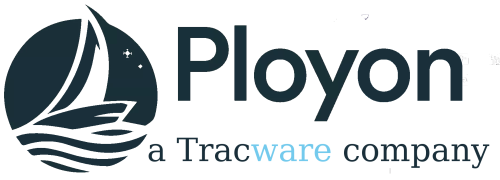
Blockchain in the Maritime Community (1)
Table of Contents
Introduction
What are the potential benefits of implementing blockchain technology in the maritime maintenance sector? Given the complexities involved in maintenance, which include supply chain management, asset tracking, and coordination among multiple stakeholders, how can blockchain’s core features – decentralisation, immutability, and security – be leveraged to improve transparency, efficiency, and trust in this domain? With global trade relying heavily on maritime transport, how can the introduction of blockchain technology help minimise downtime and ensure high operational efficiency of vessels? Furthermore, how can blockchain technology provide secure, real-time, and decentralised data management to improve maintenance procedures, reduce errors, and minimise fraudulent activities?
In this first in a two part article, we will explore the potential use-cases of blockchain in maritime maintenance. Starting with supply chain management, we’ll see how blockchain can improve the traceability and accountability of parts and materials. Next we will look at how it can enhance asset tracking and provenance, creating an immutable history of maintenance events for each maritime asset. In part two, we will also delve into how smart contracts can revolutionise maintenance agreements by automating contractual obligations. Finally, we will discuss the role of blockchain in facilitating seamless data sharing and collaboration among the diverse actors involved in this community.
Blockchain Basics
In order to fully comprehend the potential applications of blockchain technology in maritime maintenance, it is imperative to first establish a thorough understanding of the underlying principles of blockchain. Essentially, blockchain is a form of Distributed Ledger Technology (DLT) that presents a novel method for recording and sharing data among multiple parties. The term “blockchain” refers to a chain of blocks, with each block containing a list of transactions similar to an entry in a ledger. Once a block is completed, it is added to the chain in a linear, chronological order. This chain is then distributed across a network of computers, or nodes, resulting in a decentralized system.
Blockchain technology operates on three fundamental principles: decentralisation, transparency, and immutability.
Decentralisation
Decentralisation means that no single party controls the information on the blockchain. Instead, all users have equal access and control, reducing the risk of manipulation or central failure.
Transparency
Transparency is achieved through the blockchain’s public ledger, which allows anyone in the network to view the transaction history. While individual identities are encrypted, the transaction history isn’t, making the system transparent yet secure.
Immutability
Immutability is perhaps one of the most important features of blockchain technology. Once a transaction is recorded and confirmed on the blockchain, it is almost impossible to alter or delete. This feature enhances the security and trustworthiness of the data.
Now that we have a solid grasp of the basic principles and defining characteristics of blockchain technology, let’s delve deeper into its potential applications for enhancing different facets of maritime maintenance.
Use Cases
Use-Case 1: Supply Chain Management in Maritime Maintenance
Supply chain management is a crucial aspect of maritime maintenance, significantly influencing the operational efficiency of maritime assets. Traditional approaches to managing maritime supply chains have faced challenges related to transparency, authenticity, and efficiency. This section will explore how blockchain technology can revolutionise this domain, as supported by a literature review on blockchain-based applications in shipping and port management.

Blockchain, with its inherent features of decentralization, transparency, and immutability, offers a potent solution for improving supply chain management in maritime maintenance. By documenting every transaction on a blockchain, we can establish a single, unalterable record of the supply chain’s history, accessible to all network participants. This concept is further explored in a study on the technical sustainability of cloud-based blockchain integrated with machine learning for supply chain management.
This technology can oversee the procurement of parts, monitor their transit from supplier to ship, and ensure their timely maintenance. Each component can be assigned a unique, unchangeable identifier on the blockchain, facilitating effortless tracking and verification.
Benefits of Blockchain in Maritime Supply Chain Management:
- Traceability: Blockchain can offer comprehensive visibility of maritime maintenance supply chains. It can record every movement of parts on the blockchain, simplifying the tracing of their journey from manufacturer to ship, and even through maintenance cycles. This traceability can significantly cut down the time spent locating parts or understanding their history.
- Authenticity Verification: Counterfeit parts pose a substantial problem in the maritime industry. Blockchain can address this by assigning a unique identifier to each part at the time of its creation, enabling anyone to verify its authenticity at any stage in the supply chain.
- Efficiency Improvement: The transparent and immutable nature of blockchain can drastically reduce the paperwork and administrative burden associated with managing supply chains. It can automate numerous processes, such as invoicing and payment, leading to quicker and more efficient operations. A study on blockchain’s roles in meeting key supply chain management objectives further elaborates on this.
Several projects have already started showcasing the potential of blockchain in maritime supply chain management. For instance, Maersk and IBM’s blockchain-based shipping solution, TradeLens, aims to foster more efficient and secure global trade. The platform offers real-time access to shipping data and shipping documents, including IoT and sensor data ranging from temperature control to container weight.
Another notable project is BlocBox, a blockchain protocol for safer and smarter maritime logistics. The project seeks to address data discrepancies and fraud by recording all logistical events in a ship’s journey, from departure to arrival, and during maintenance. The implementation of blockchain technology in logistics is a rising trend that further supports these initiatives.
These trailblazing projects underscore the potential of blockchain to revolutionise supply chain management in the maritime maintenance industry. In the next section, we will delve into how blockchain can enhance asset tracking and provenance.
Use-Case 2: Asset Tracking and Provenance in Maritime Maintenance
Asset tracking and provenance are vital in maritime maintenance operations, as they determine the history, condition, and true ownership of various components. Traditional methods of tracking and establishing provenance have been complex, prone to errors, and susceptible to manipulation. However, blockchain technology presents innovative solutions to these challenges.
Blockchain, with its immutable and decentralized characteristics, can effectively create a ‘digital twin’ of physical assets in the maritime industry. From the moment an asset is created, every transaction, movement, and maintenance event associated with it can be recorded on the blockchain. This results in an auditable, verifiable record of the asset’s lifecycle – its provenance.
Whether it’s a ship’s engine or a navigation system, each asset can be tagged with a unique digital identifier on the blockchain. As the asset moves through its lifecycle – from manufacture, through various ownerships and maintenance cycles, to retirement – every event is captured in the blockchain ledger, creating a transparent and tamper-proof history.
Benefits of Blockchain in Asset Tracking and Provenance:
- Verifying Asset Ownership: The decentralised nature of blockchain means that no single entity can alter the ownership records without consensus, reducing the chances of disputes and fraud.
- Tracking Maintenance History: Blockchain enables a real-time, indelible record of all maintenance activities, making it easier to comply with safety standards, schedule preventive maintenance, and assess the condition of an asset.
- Ensuring Authenticity: Blockchain can help ensure that an asset and its components are genuine. This can be particularly useful in identifying and removing counterfeit parts from the supply chain, enhancing safety and performance.
Several applications of blockchain in this domain are already showing promise. For instance, the Maritime Blockchain Labs’ (MBL) project, created in collaboration with Lloyd’s Register, uses blockchain to ensure the traceability and authenticity of marine fuels, helping reduce the use of substandard and polluting fuels in the shipping industry.
Another company, ShipChain, is using blockchain to track assets across the entire supply chain in the shipping industry. By combining IoT and blockchain, ShipChain provides end-to-end visibility of assets and their conditions, helping streamline maintenance operations.
These examples underscore how blockchain technology can revolutionise asset tracking and provenance in maritime maintenance, ensuring transparency, improving efficiency, and reducing fraud. In the next post, we’ll delve into how blockchain’s smart contracts can be leveraged in maintenance agreements.





Leave a Reply